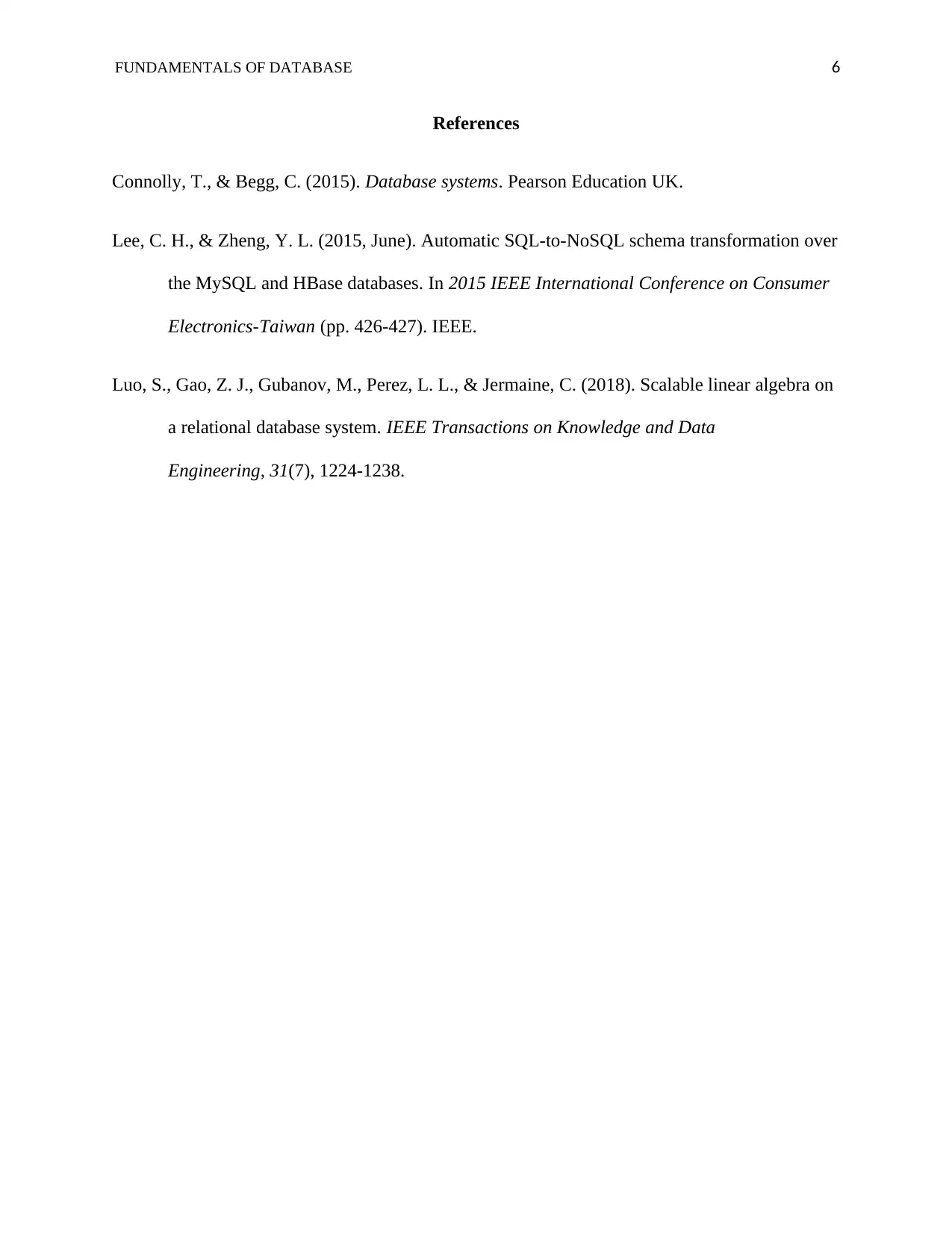IT403 Fundamentals of Databases Assignment: Relational Algebra
VerifiedAdded on 2022/09/29
|6
|616
|26
Homework Assignment
AI Summary
This assignment solution for IT403 Fundamentals of Databases covers fundamental concepts including primary and foreign keys, and relational algebra. The solution provides examples of relations illustrating primary and foreign keys, explaining their roles in database design. The solution also addresses relational algebra queries, demonstrating how to retrieve specific data based on given criteria, such as finding students who have taken a specific course, students with specific grades, and courses that were not offered in a specific term. The student-provided solution offers clear explanations and examples to facilitate understanding of database concepts. This assignment is a valuable resource for students studying database systems and relational database design.
1 out of 6







![[object Object]](/_next/static/media/star-bottom.7253800d.svg)